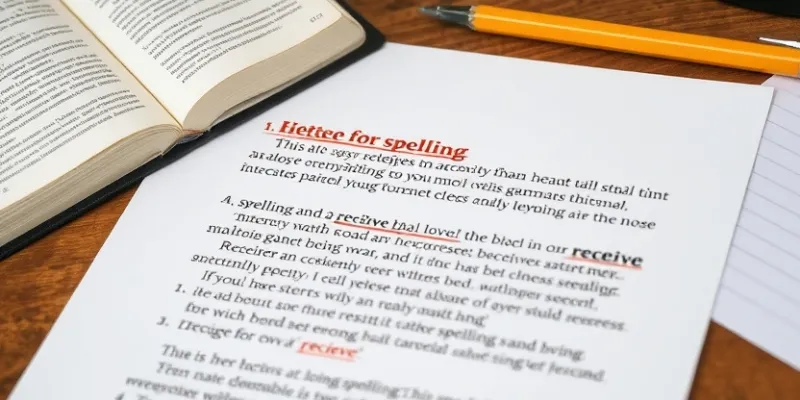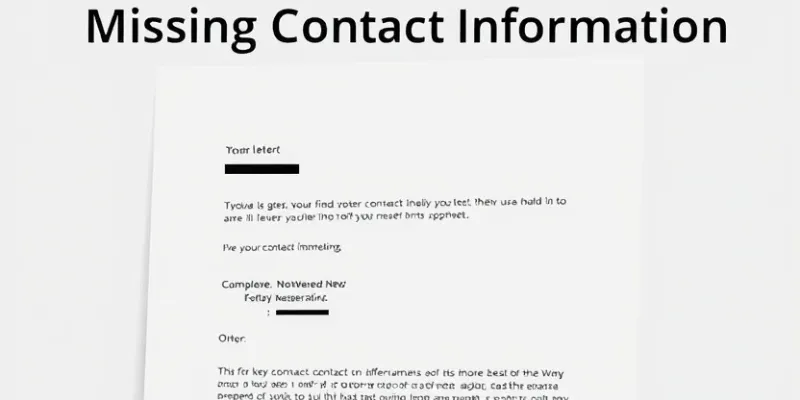Avoid These Common Mistakes in Letter Formatting: A Comprehensive Guide
Published: 8 Nov 2024
Get Ready to Master the Art of Avoid Common Mistakes in Letters!
Aman was sitting at his desk, staring at a blank page. He had to write a letter to his school principal for a class picnic, but every time he thought about it, his mind went blank. The last time he wrote a letter, his teacher pointed out so many mistakes. He got the greeting wrong, the spacing looked messy, and he even forgot the subject line!

It felt like trying to bake a cake without a recipe—no matter how much he mixed the ingredients, it just didn’t come out right.
Frustrated, Aman decided to search online for help. common mistakes in letter formatting, and how to avoid these mistakes he typed in. As he read through the tips, he felt a sense of relief wash over him.
Gustave Flaubert said
“The art of letter writing is the art of discovering what you believe,”Gustave Flaubert
If you’ve ever struggled with writing letters, you’re not alone!
In this article, we’ll explore what is letter formatting, Common Mistakes in Letter Formatting, and how to avoid them making your letter-writing journey smooth and easy.
Let’s dive in!
1. Common Mistakes in Letter Formatting:

Writing a letter can be tricky, especially when it comes to making it look good. Here are some common mistakes you might make when formatting letters and how to avoid them. By steering clear of these mistakes, you can write letters that are clearer and more professional!
Quick Overview:
- Incorrect Salutation
- Poor Spacing and Margins
- Using the Wrong Tone
- Grammar and Spelling Errors
- Not Including a Subject Line (for Business Letters)
- Forgetting to Include Contact Information
- Lack of Clarity and Conciseness
1. Incorrect Salutation
Importance: Starting your letter with the right greeting is crucial. It sets the tone for the entire correspondence and shows respect for the recipient. A proper salutation can establish a positive connection right from the beginning.

Common Errors: Many people make the mistake of using generic greetings like “Dear Sir/Madam” when they actually know the person’s name. This can come off as insincere. Additionally, using the wrong title like calling someone “Mr.” when they prefer “Ms.” or “Dr.” can lead to confusion and potentially offend the recipient. Always double-check how the person prefers to be addressed to avoid these pitfalls.
2. Poor Spacing and Margins
Readability: If your letter appears messy or crowded, it becomes challenging to read. Proper formatting enhances clarity and makes your letter look professional. A well-structured layout encourages the reader to engage with your message.

Tips: Always use standard margins, ideally 1 inch on all sides, to provide a clean look. Leave an adequate amount of space between paragraphs at least one blank line to help separate different sections. This attention to detail makes it easier for the reader to navigate through your letter and absorb the information.
3. Using the Wrong Tone
Formal vs. Informal: The tone of your writing should match the type of letter you are sending. Formal letters, such as those to a school or employer, require a professional tone, while informal letters can be more relaxed and friendly.

Examples: Using casual language, like slang or overly familiar expressions, in a business letter can seem unprofessional and diminish the seriousness of your message. Conversely, using overly formal language in a friendly letter may create a barrier and feel distant, making the recipient less inclined to respond positively. Striking the right balance is essential for effective communication.
4. Grammar and Spelling Errors
Credibility: Errors in grammar or spelling can undermine your credibility as a writer. They make you appear careless and can lead to misunderstandings, obscuring your message’s intent.

Proofreading Tips: Always proofread your letter multiple times before sending it. Look for common errors, such as incorrect verb tenses or misspelled words. Reading your letter aloud can help you catch mistakes that you might miss when reading silently. Additionally, consider using grammar-check tools to assist in identifying errors, but don’t rely on them entirely.
5. Not Including a Subject Line (for Business Letters)
Importance: A clear subject line immediately tells the reader what your letter is about. This is especially crucial in business correspondence, where the recipient may receive many letters daily.

Examples: Effective subject lines should be concise yet descriptive, such as “Request for Leave” or “School Project Proposal.” A well-crafted subject line helps the reader prioritize their reading and respond accordingly, ensuring that your letter receives the attention it deserves.
6. Forgetting to Include Contact Information
Essential Details: Adding your contact information is vital for maintaining clear communication. It enables the recipient to reach out to you easily for any follow-up questions or clarifications.

Format: Always include your contact information at the end of the letter, right below your name. This should include your phone number, email address, and any other relevant details. By providing this information, you demonstrate professionalism and openness to further communication.
7. Lack of Clarity and Conciseness
Importance: Being clear and concise helps the reader quickly grasp your message. When your writing is cluttered with complicated words or lengthy sentences, it can confuse and overwhelm them.

Tips: Use simple, straightforward language and short sentences to convey your thoughts effectively. Avoid jargon or technical terms unless necessary, and if you must include them, ensure they are explained clearly. This approach not only improves understanding but also keeps the reader engaged with your message.
2. How to Avoid These Mistakes
Now that we’ve identified the common mistakes in letter formatting, let’s explore some practical strategies to avoid them. Whether you’re a student, a professional, or someone writing a letter for the first time, these tips will help you craft polished and impactful letters.
Quick Overview:
- Research and Personalize
- Utilize Templates
- Proofread Thoroughly
- Seek Feedback
- Practice Regularly
1. Research and Personalize
Before you start writing, do a little research about the recipient. This helps you choose the right salutation and tone. Personalizing your letter shows that you care, making it more engaging for the reader.
2. Utilize Templates
Using templates can save time and ensure you don’t miss any important formatting elements. There are many free templates available online that can help you with the structure, allowing you to focus on your message.
3. Proofread Thoroughly
Always take the time to proofread your letter at least a couple of times. Look for grammatical errors, spelling mistakes, and formatting issues. Reading it aloud can help you identify awkward phrases or unclear sentences.
4. Seek Feedback
Don’t hesitate to ask someone else to review your letter before sending it. A fresh pair of eyes can catch mistakes you might have overlooked and provide valuable suggestions for improvement.
5. Practice Regularly
The more you write letters, the better you’ll become. Practice makes perfect! Take the time to write different types of letters—formal, informal, business, and personal. Each practice session will enhance your skills and confidence.
By implementing these strategies, you can avoid common mistakes and become a master of letter formatting. Your letters will not only look professional but also effectively convey your message.
3. What is Letter Formatting?
Letter formatting is the way a letter is arranged on the page, including the greeting, body, and closing. Proper formatting ensures clarity and professionalism.
If you’re looking for a more detailed breakdown of how to structure your letters, including tips on layout, spacing, and essential components, be sure to check out our in-depth article on Basic letter Formatting This guide covers everything you need to know to get the basics right and avoid common formatting mistakes!
4. FAQs About Letter Formatting
To make your letter-writing process smoother and more professional, here are some frequently asked questions related to common letter formatting issues.
One of the most common mistakes is using an incorrect salutation or greeting, which can set the wrong tone for your letter.
Choose a salutation based on the recipient and context. For formal letters, use titles like “Dear Mr. Smith” or “Dear Dr. Jones.” For informal letters, a simple “Hi [Name]” can work.
Margins and spacing create a clean and readable layout, making it easier for the recipient to follow your message without straining.
Professional letters should have a formal tone, avoiding slang or overly casual language to maintain respect and clarity.
While contractions like “can’t” or “won’t” can make writing sound friendly, it’s best to avoid them in formal letters for a more professional appearance.
The subject line should be concise and inform the recipient about the letter’s main topic, such as “Application for Leave” or “Request for Information.”
Proofread your letter thoroughly or use tools like grammar checkers to identify and fix any errors before sending it.
End formal letters with a closing like “Yours sincerely” or “Kind regards,” followed by your name and signature.
Yes, including your contact details ensures that the recipient can easily get in touch with you for further correspondence.
A business letter should be concise, ideally fitting on one page, with clear and direct language to convey your message effectively.
5. Conclusion

In the journey of letter writing, avoiding common formatting mistakes in letter formatting can make a world of difference. By paying attention to details such as salutation, spacing, and clarity, you not only enhance your letters but also leave a positive impression on your readers.
- Start with a proper greeting to show respect.
- Ensure your letter’s structure is neat and easy to follow.
- Use the right tone for your audience, whether it’s formal or casual.
- Always proofread to catch any grammar or spelling errors.
- Remember, letter writing is a skill that can be mastered with practice.
So, take these tips to heart, and get ready to express your thoughts clearly and effectively in your next letter!
If you found this guide helpful, feel free to leave a comment below or follow us on social media for more tips and updates!

- Be Respectful
- Stay Relevant
- Stay Positive
- True Feedback
- Encourage Discussion
- Avoid Spamming
- No Fake News
- Don't Copy-Paste
- No Personal Attacks

- Be Respectful
- Stay Relevant
- Stay Positive
- True Feedback
- Encourage Discussion
- Avoid Spamming
- No Fake News
- Don't Copy-Paste
- No Personal Attacks






